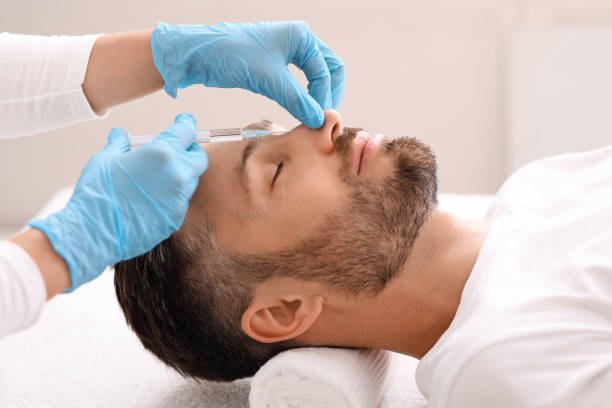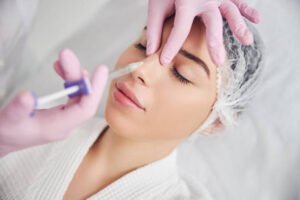
Understanding Rhinoplasty
What is Rhinoplasty?
Rhinoplasty Abu Dhabi, commonly referred to as a “nose job,” is a surgical procedure designed to reshape the nose for aesthetic or functional purposes. It is one of the most sought-after cosmetic surgeries globally, allowing individuals to achieve their desired nasal appearance while addressing issues like breathing difficulties.
Types of Rhinoplasty
There are two primary types of rhinoplasty:
- Open Rhinoplasty: This technique involves making an incision across the columella (the skin between the nostrils) and lifting the skin off the nose. This method provides better access to the nasal structures and is often used for more complex cases.
- Closed Rhinoplasty: In this technique, incisions are made within the nostrils, resulting in no visible scarring. It is typically used for minor reshaping and is less invasive.
Why People Choose Rhinoplasty
Aesthetic Reasons
Many individuals opt for rhinoplasty to enhance their facial symmetry and improve their overall appearance. Common aesthetic concerns include a dorsal hump, bulbous tip, or wide nostrils. The goal is often to create a more harmonious look that complements the individual’s features.
Functional Reasons
In addition to cosmetic improvements, rhinoplasty can address functional issues, such as a deviated septum, which can cause breathing problems. By correcting these issues, patients often experience improved airflow and reduced nasal obstruction.

The Rhinoplasty Procedure
Consultation and Planning
The journey to rhinoplasty begins with a consultation with a qualified plastic surgeon. During this appointment, the surgeon will assess the patient’s nasal structure, discuss aesthetic goals, and evaluate any functional issues. This is an excellent opportunity for patients to ask questions and express concerns.
The Surgical Process
On the day of surgery, patients will be given anesthesia (either general or local) to ensure comfort throughout the procedure. The surgeon will then make the necessary incisions (open or closed) and reshape the nasal structure, which may involve modifying bone, cartilage, or skin.
Anesthesia Options
Patients can choose between general anesthesia, where they are completely unconscious, or local anesthesia, which numbs the nasal area while keeping the patient awake but relaxed. The choice depends on the complexity of the procedure and the patient’s preference.
Recovery After Rhinoplasty
Immediate Post-Operative Care
After surgery, patients will spend some time in recovery before being discharged. It’s normal to experience swelling, bruising, and discomfort, which can be managed with medication prescribed by the surgeon. Nasal splints may be placed to support the new shape during the initial healing phase.
Long-Term Recovery Tips
Full recovery can take several weeks, with swelling gradually subsiding over the first few months. To ensure optimal results, patients should follow these tips:
- Avoid strenuous activities and exercise for at least a month.
- Sleep with the head elevated to minimize swelling.
- Avoid blowing the nose during the initial healing period.
Costs of Rhinoplasty in Abu Dhabi
Factors Influencing Cost
Several factors can influence the overall cost of rhinoplasty, including:
- Surgeon’s Experience: Highly experienced and board-certified surgeons may charge more for their expertise.
- Facility Fees: The type of facility can affect costs.
- Geographic Location: Prices can vary based on the region within Abu Dhabi.
Choosing the Right Surgeon
Qualifications to Look For
Selecting the right surgeon is crucial for achieving the desired results. Patients should look for:
- Board Certification: Ensure the surgeon is certified by the American Board of Plastic Surgery or a similar reputable organization.
- Experience in Rhinoplasty: Review the surgeon’s portfolio and ask about their experience with the specific type of rhinoplasty desired.
Questions to Ask During Consultation
During the consultation, patients should ask questions such as:
- What are the potential risks and complications?
- How many rhinoplasty procedures have you performed?
- Can you provide before-and-after photos of previous patients?
Risks and Considerations
Common Risks Associated with Rhinoplasty
Like any surgical procedure, rhinoplasty carries potential risks, including:
- Infection
- Scarring
- Breathing difficulties
- Unsatisfactory aesthetic results
Realistic Expectations
It’s essential for patients to have realistic expectations regarding the outcomes of rhinoplasty. The goal is to enhance the nose’s appearance and functionality, but perfection is not guaranteed. Open communication with the surgeon can help align expectations with potential results.
Success Stories and Testimonials
Case Studies from Abu Dhabi
Many individuals in Abu Dhabi have undergone successful rhinoplasty procedures, sharing their transformative experiences. Testimonials often highlight improved self-confidence and satisfaction with their new appearance.
Patient Experiences
Patients frequently express gratitude for the support and care provided by their surgeons and the medical staff throughout the process. Positive experiences contribute significantly to overall satisfaction with the procedure.
Conclusion
In summary, rhinoplasty in Abu Dhabi offers individuals the opportunity to enhance their appearance and address functional issues related to the nose. With proper research, careful consideration of a qualified surgeon, and adherence to post-operative care guidelines, patients can achieve satisfying and long-lasting results.
FAQs about Rhinoplasty
1. How long does the recovery process take?
Recovery can take several weeks, but most patients return to light activities within a week.
2. Will I have visible scars after the surgery?
Scarring depends on the type of rhinoplasty performed; open rhinoplasty may leave more noticeable scars than closed rhinoplasty.
3. Can rhinoplasty be performed alongside other procedures?
Yes, rhinoplasty is often combined with other cosmetic procedures, such as chin augmentation or facelifts, for a more comprehensive facial rejuvenation.
4. How do I know if I’m a good candidate for rhinoplasty?
Good candidates are typically in good health, have realistic expectations, and are unhappy with the appearance or function of their nose.
5. What should I do if I am unhappy with my rhinoplasty results?
If you have concerns about your results, it’s important to consult with your surgeon for a thorough evaluation and discussion of potential revisions if necessary.



